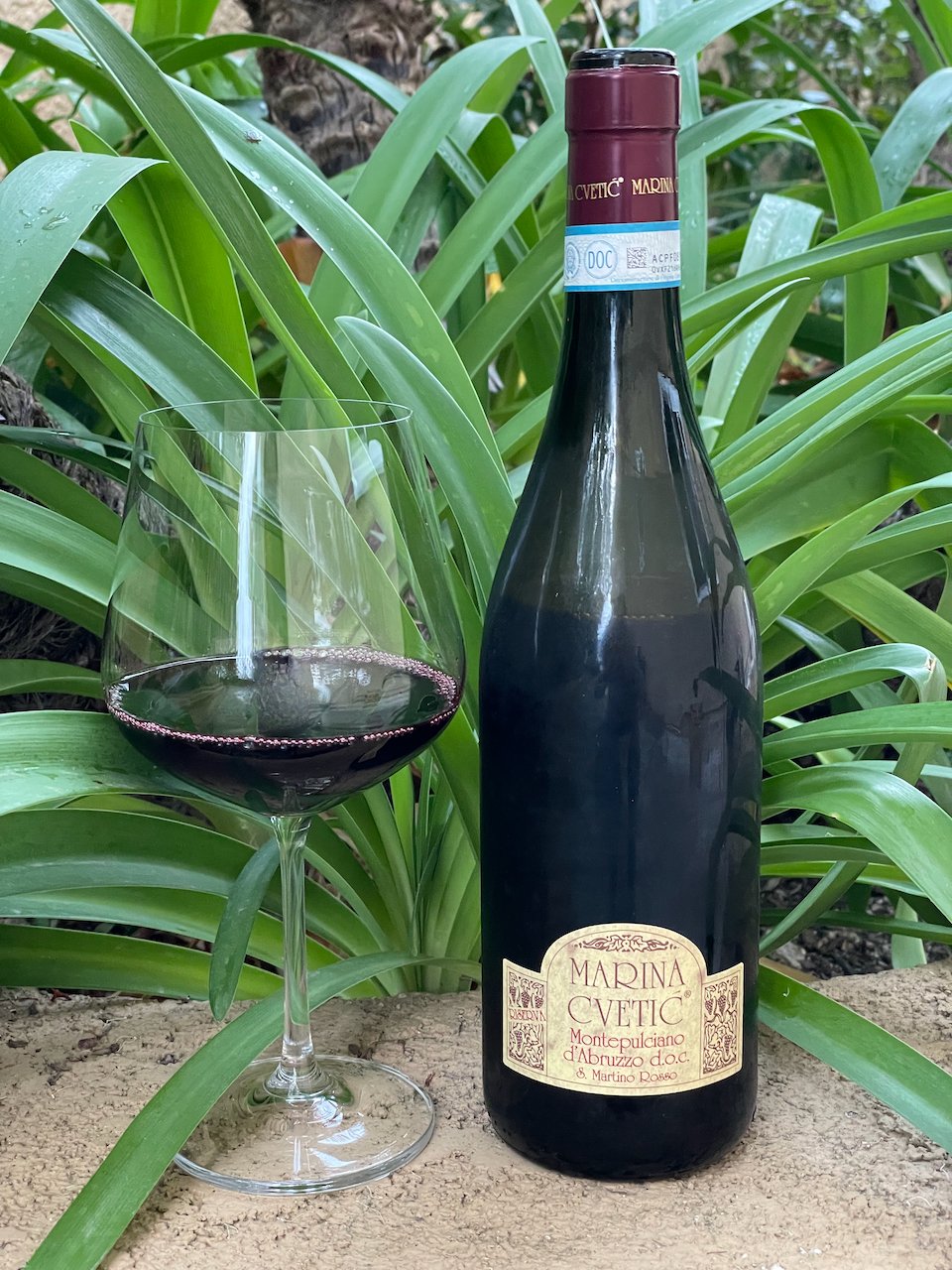Masciarelli (Mass-shee-ah-RELL-ee) Winery is located in the Abruzzo region of Italy on the eastern coast, just east of Rome on the Adriatic Sea. It was established in 1981 from the entrepreneurial intuition of Gianni Masciarelli. Today, Miriam Masciarelli (Gianni’s daughter) works with her mother, Marina Cvetić Masciarelli, to run this fabulous family winery that now has 22 labels and seven product lines all sourced from 60 vineyards in all four provinces of Abruzzo. One of their product lines, Marina Cvetić, was named by Gianni in honor is his wife.
2019 Marina Cvetić Montepulciano d’Abruzzo Riserva ($38)
This wine is produced from 100% Montepulciano grapes that were harvested from four top “cru” vineyards ranging between 435-1,200 feet in altitude. The fruit from each vineyard was fermented and macerated separately. It was aged 12 months in French barrels of first-use before being bottled. It then underwent further aging in the bottle.
Marina Cvetić Montepulciano is deep ruby red in color. On the nose it has medium notes of red and dark fruit, including dark cherry, along with herbal notes and hints of oak. On the palate, this full-bodied wine is rich and complex with red fruit flavors, dried fruit, some spicy notes, cocoa, and black pepper. It has a medium-long finish.
Masciarelli’s Marina Cvetić Montepulciano is yet another delicious example of the great wines coming from the Abruzzo region of Italy and featured as the Behind the Cork™ Wine of the Week. Cheers!
Disclosure of Wine Sample Submission: I received this sample at no cost for review. The opinions expressed are entirely my own.
Media Sample Provided by Masciarelli Winery







